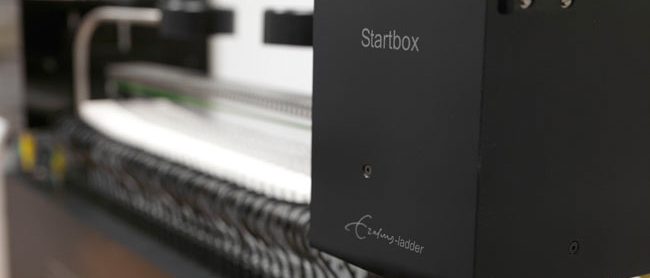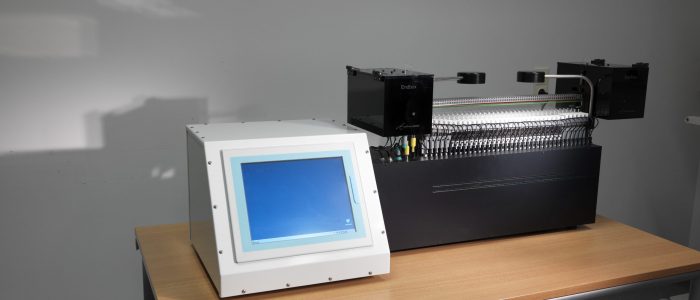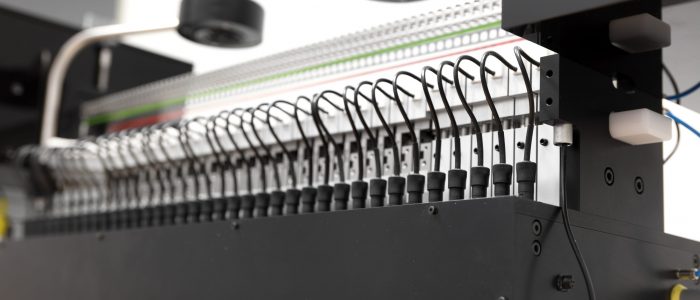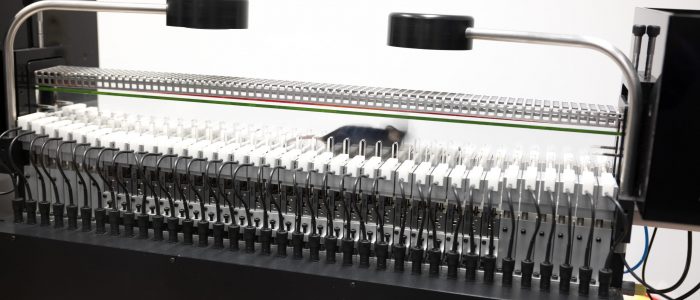- The experiments do not require surgery
- The Erasmus Ladder will be completely computer controlled and thus the experiments are not time consuming
- The Erasmus Ladder has a feedback control which allows us to modify the position of rungs during ongoing locomotion
- With a few adjustments it is also possible to screen for hippocampal and amygdaloidal deficits
Production and Sales for the Erasmusladder are handled by Noldus.
What is Erasmusladder?
Recent developments in the creation of mouse models for human diseases have called for tools that are able to quickly screen mutant mice for their deficits. In our department, we have developed two successful tools for detecting mouse mutants with cerebellar deficits: eye blink conditioning and VOR adaptation. However, for screening large amounts of mice these systems are too time consuming, as they require specialized and invasive surgery. Therefore we developed a new tool: The Erasmus Ladder.
How Erasmusladder works
The Erasmus Ladder is a horizontal ladder with two cages. The horizontal ladder has 25 rungs. The rungs are divided in a left side and a right side. All subdivisions of the rungs are equipped with pressure sensors. The rungs can be automatically protracted and retracted. The mice are trained to walk with a constant speed from one cage to the other. We have developed software to analyze the walking pattern of the mice.
Selected publications
Van der Vaart T., Van Woerden G.M., Elgersma Y., De Zeeuw C.I., Schonewille M. (2011) Motor deficits in neurofibromatosis type 1 mice: the role of the cerebellum, Genes, Brain and Behavior.
Schonewille M., Belmeguenai A., Koekkoek S.K., Houtman S.H., Boele H.J., van Beugen B.J., Gao Z., Badura A., Ohtsuki G., Amerika W.E., Hosy E., Hoebeek F.E., Elgersma Y., Hansel C., and De Zeeuw C.I. (2010) Purkinje Cell-Specific Knockout of the Protein Phosphatase PP2B Impairs Potentiation and Cerebellar Motor Learning, Neuron.
Van Der Giessen R.S., Koekkoek S.K., van Dorp S., De Gruijl J.R., Cupido A., Khosrovani S., Dortland B., Wellershaus K., Degen J., Deuchars J., Fuchs E.C., Monyer H., Willecke K., De Jeu M.T., De Zeeuw C.I. (2008) Role of olivary electrical coupling in cerebellar motor learning. Neuron 58(4):599-612.



